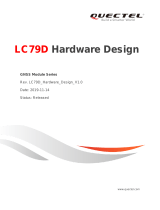
Contents
1Features...........................................................................2
2EVB-LIV4F general presentation ...................................................3
3Interfaces .........................................................................4
3.1 Power by USB .................................................................4
3.2 ON/OFF switch ................................................................4
3.3 Reset ........................................................................5
3.4 LED indicators .................................................................5
3.5 UART by USB .................................................................6
3.6 GNSS input antenna............................................................7
3.7 I2C and power connector interface ................................................7
4Current measurement process .....................................................8
5Teseo-Suite connection ............................................................9
5.1 Getting started with the Teseo-Suite...............................................9
5.2 Add/delete device ..............................................................9
5.3 Connect or disconnect Control Port ..............................................11
6Board general view ...............................................................12
6.1 Internal board view ............................................................12
6.2 Block diagram overview ........................................................12
Appendix A Other information ........................................................13
A.1 Reference documents..........................................................13
Revision history .......................................................................14
UM3212
Contents
UM3212 - Rev 1 page 15/18




















